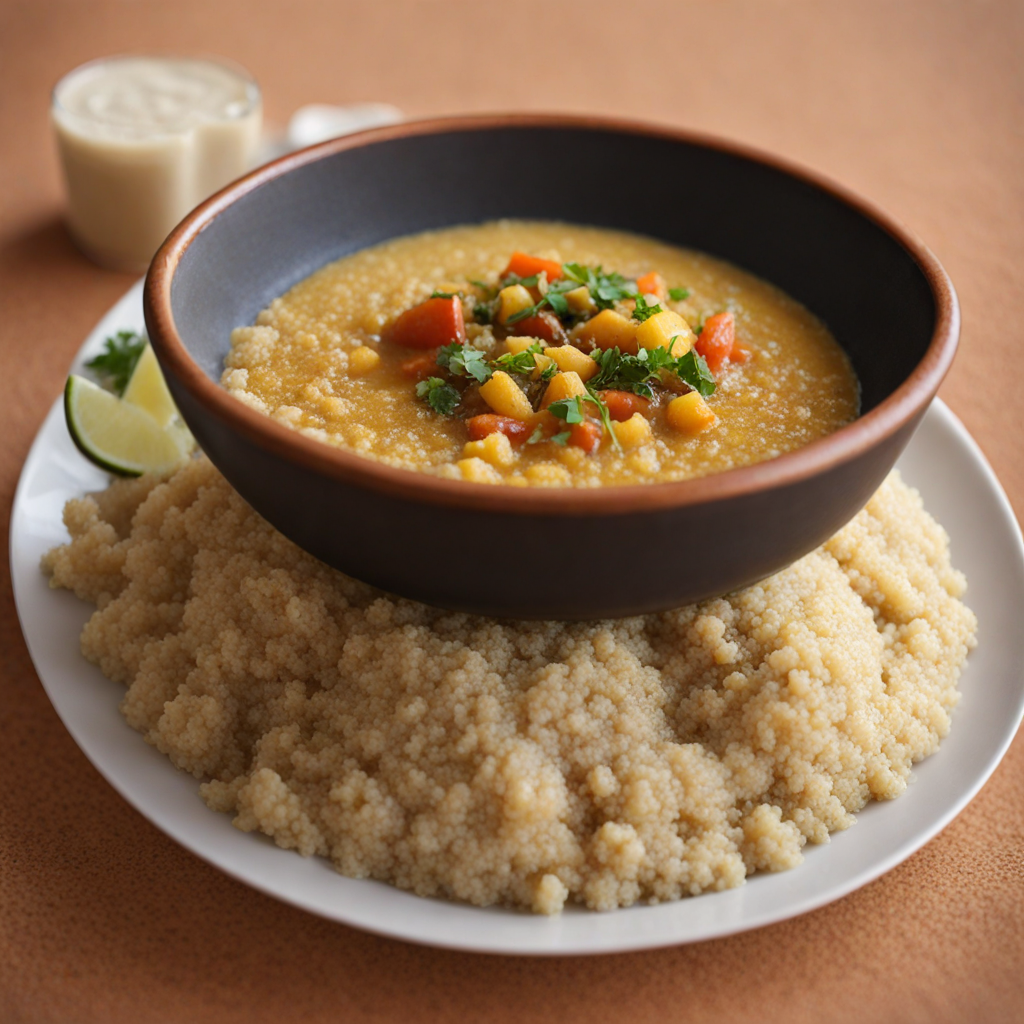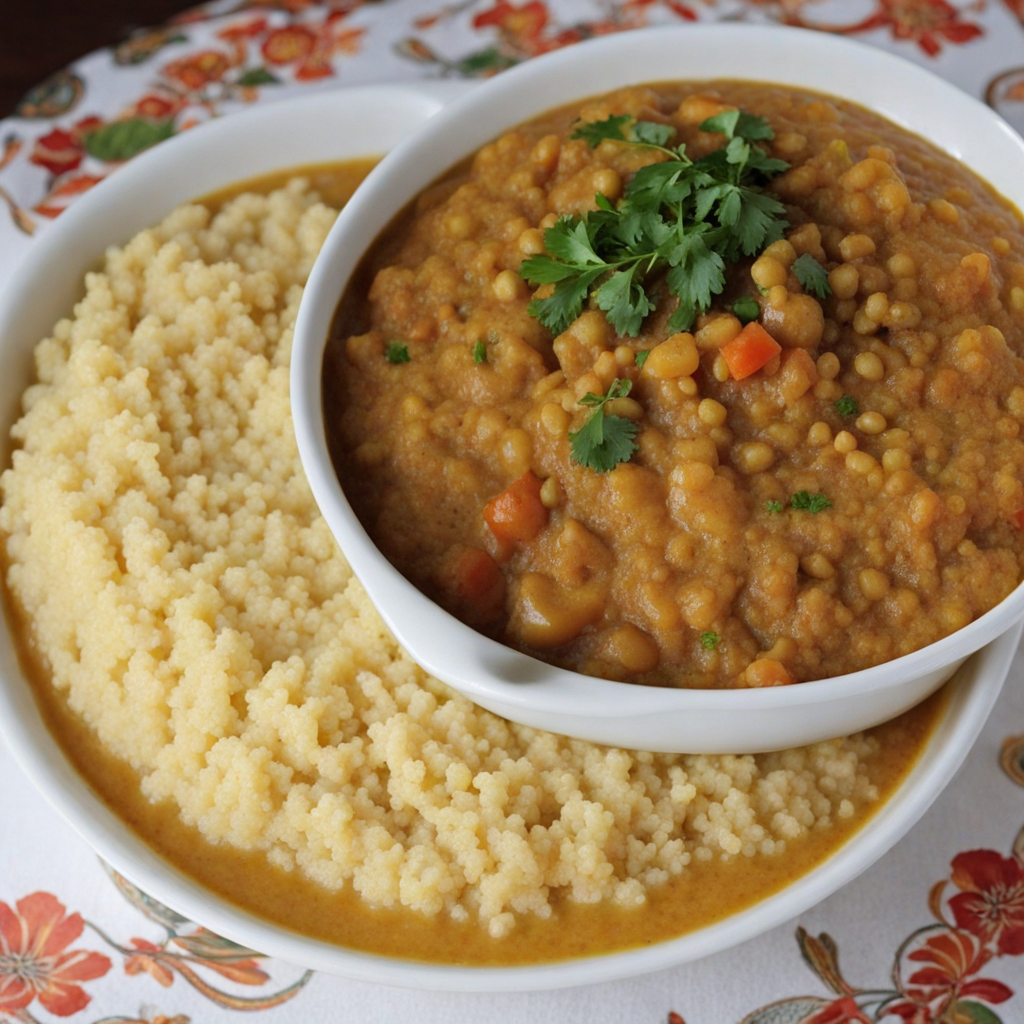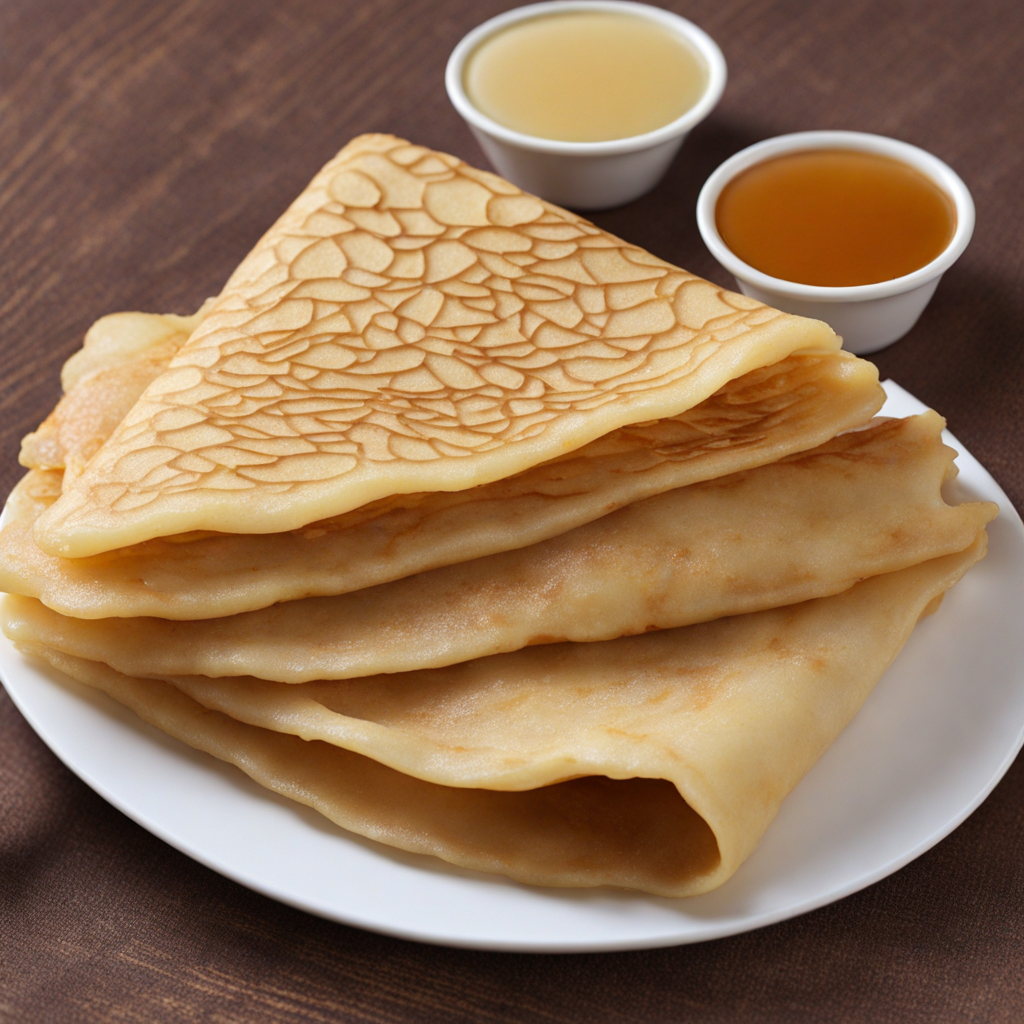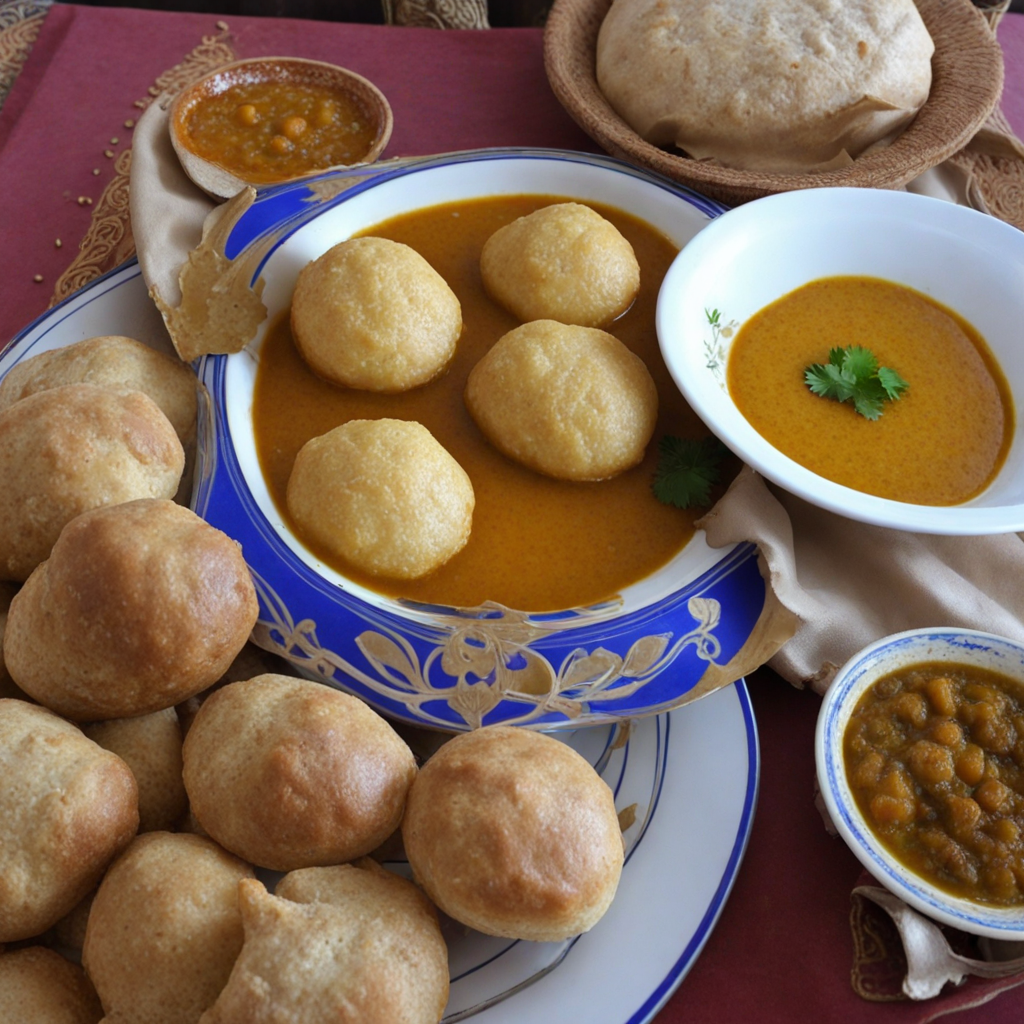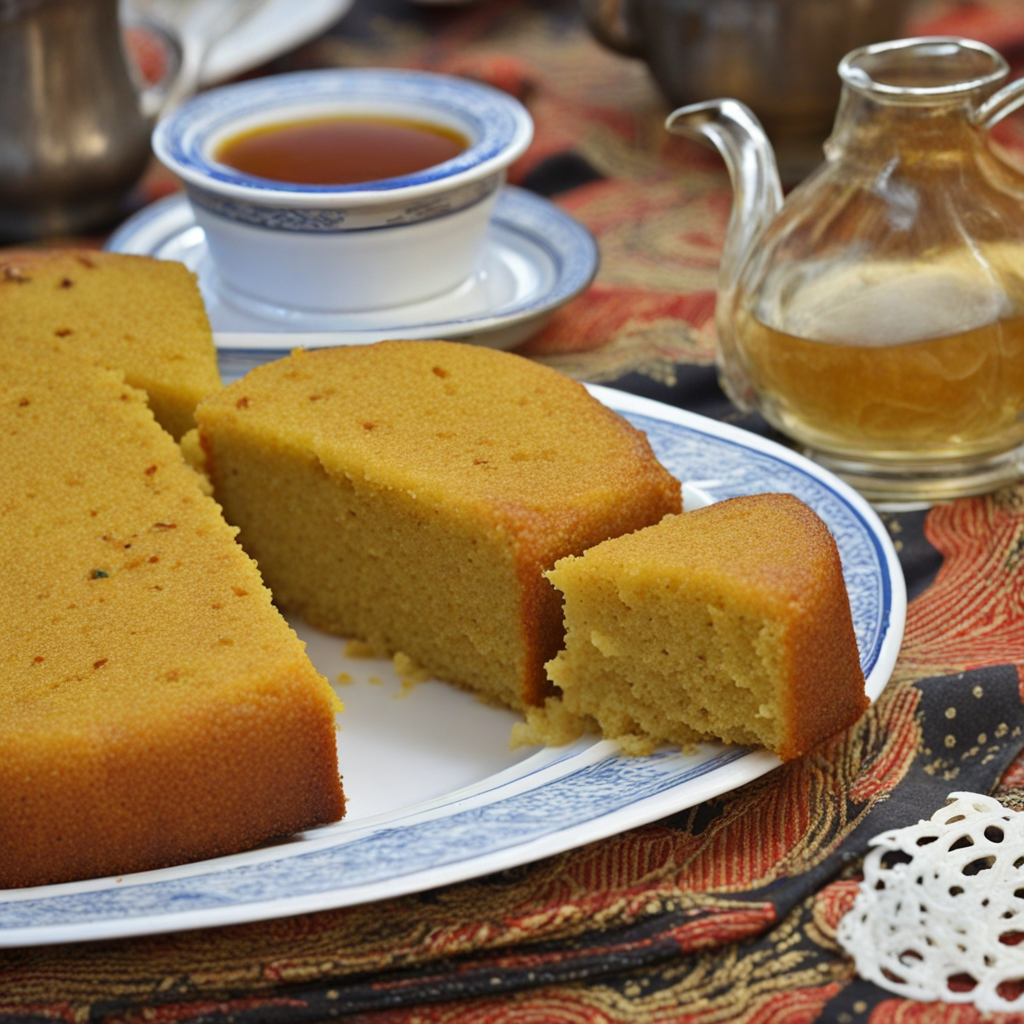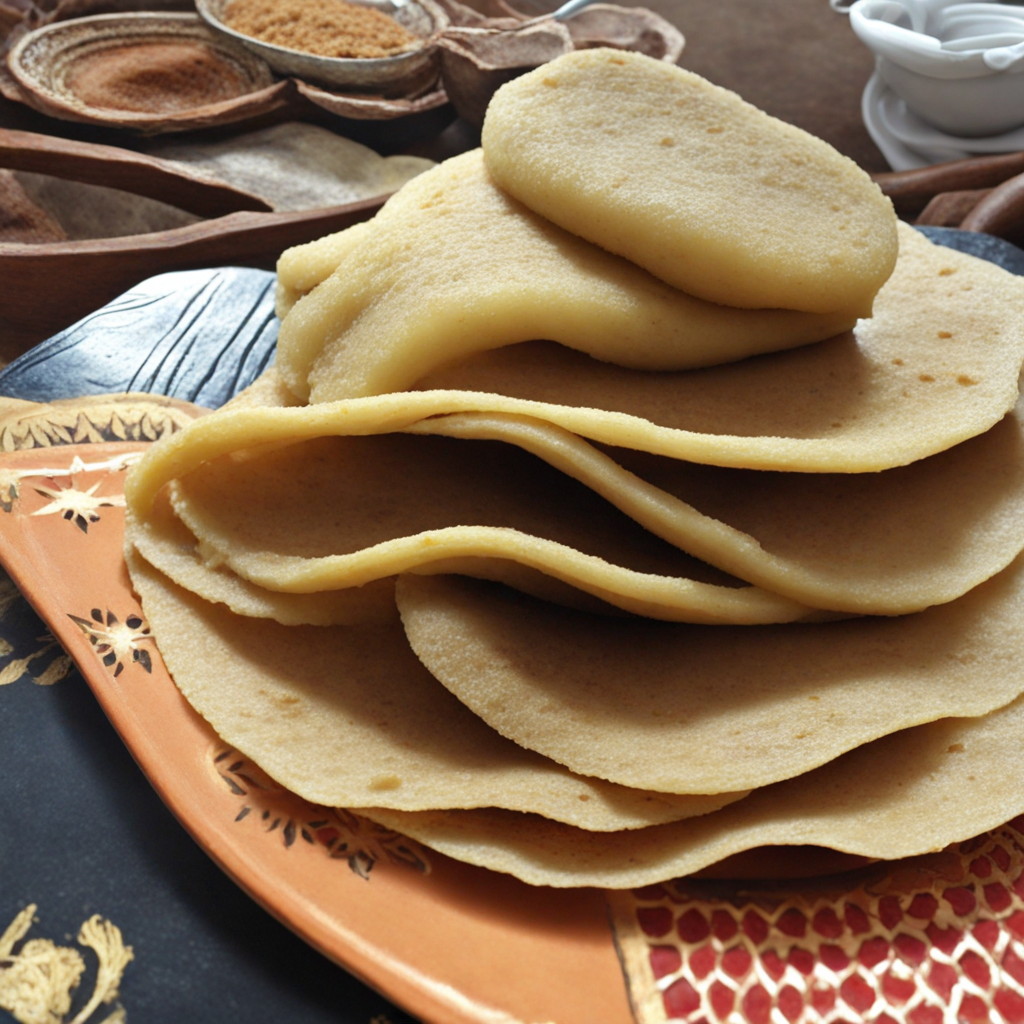Soor
Soor is a traditional Somali dish that embodies the rich culinary heritage of Somalia. It is a hearty porridge made primarily from cornmeal or wheat flour, which is slowly cooked to achieve a thick, creamy consistency. The texture of Soor is smooth and velvety, making it a comforting option for breakfast or any meal of the day. The dish is typically seasoned with a pinch of salt, enhancing its flavor profile while allowing the natural taste of the grains to shine through. Soor is often enjoyed with a drizzle of ghee or a sprinkle of sugar, depending on whether one prefers a savory or slightly sweet version of this staple food. One of the remarkable aspects of Soor is its versatility. It can be served plain or paired with various accompaniments. Common side dishes include savory stews such as Suqaar, which is made with tender chunks of meat, or it can be enjoyed alongside spicy lentil dishes. The combination of Soor with these flavorful sides creates a delightful balance, as the mildness of the porridge complements the robust spices found in Somali cuisine. Additionally, some enjoy it with fresh fruits or yogurt, adding a refreshing contrast to the warm, comforting base of Soor. Soor is not just a meal; it is a communal experience often shared among families and friends. The act of gathering around a large platter, dipping into the dish with hands, and enjoying the food together reflects the deep-rooted traditions of Somali hospitality. Whether you are trying it for the first time or revisiting a childhood favorite, Soor offers a unique taste of Somalia that invites you to appreciate its simplicity and heartiness while connecting with the culture and people of this East African nation.
How It Became This Dish
The History of 'Suur' in Somali Cuisine Introduction to Suur Suur, a traditional Somali dish, is a unique culinary representation of the country’s rich heritage and diverse cultural influences. Known for its distinctive flavor profile and nutritional value, Suur is a staple in Somali households, often served during communal gatherings and celebrations. The dish, primarily made from fermented grains, showcases the ingenuity of Somali cooking and reflects the historical context in which it developed. Origins of Suur The origins of Suur can be traced back to the nomadic pastoralist lifestyle of the Somali people, who have inhabited the Horn of Africa for centuries. Historically, the Somali diet has been largely influenced by the availability of local resources and the seasonal movement of livestock. The use of grains, particularly sorghum and millet, is prominent in Somali cuisine, stemming from the region's agricultural practices. Fermentation, a key process in the preparation of Suur, has ancient roots in many cultures around the world. In Somalia, the practice likely emerged as a means to preserve food in a land where access to fresh ingredients could be unpredictable due to the arid climate. Fermented foods, rich in probiotics, were essential not only for nourishment but also for maintaining health, particularly in a society that relied heavily on animal husbandry. Cultural Significance Suur is more than just a dish; it symbolizes community and hospitality in Somali culture. The act of preparing and sharing Suur is often a communal activity, bringing families and friends together. During special occasions such as weddings, religious holidays, and family reunions, Suur takes center stage as a dish that embodies unity and celebration. The preparation of Suur is traditionally a labor-intensive process, requiring time and skill. Families often come together to participate in making this dish, reinforcing social bonds and cultural identity. The sharing of Suur with guests is a gesture of goodwill and a testament to the Somali value of hospitality, known as "soof," which emphasizes the importance of generosity and communal sharing. The Preparation of Suur The preparation of Suur involves several steps, highlighting traditional techniques that have been passed down through generations. The primary ingredient is typically sorghum or millet, which is soaked in water to initiate the fermentation process. This soaking period can last several days, allowing natural yeasts and bacteria to transform the grains, imparting a tangy flavor. Once fermentation is complete, the grains are ground into a fine flour and combined with water to create a thick batter. This batter is then left to ferment further, resulting in a slightly sour taste that characterizes Suur. The final step involves cooking the batter on a hot griddle or flat pan, creating a pancake-like consistency. The result is a soft, slightly chewy flatbread that can be enjoyed on its own or served alongside various accompaniments. Development Over Time As Somalia has undergone various social, political, and economic changes, so too has the preparation and consumption of Suur. The Somali diaspora, which has spread across the globe due to conflict and migration, has introduced Suur to new culinary contexts. In countries like the United States, the United Kingdom, and Canada, Somali communities have adapted the dish to local tastes while maintaining its cultural significance. In these new environments, Suur has found its way onto restaurant menus and into homes, often served alongside other traditional dishes such as "bariis iskukaris" (spiced rice) and "hilib" (meat). The introduction of new ingredients and cooking techniques has enriched the traditional recipe, making it more accessible to a broader audience while still honoring its roots. Moreover, the rise of health-conscious eating has brought renewed interest in fermented foods, positioning Suur as a nutritious option in modern diets. Its probiotic qualities and use of whole grains align with current trends towards healthy eating, prompting many to explore its benefits beyond the Somali community. Suur in Contemporary Somali Cuisine In contemporary Somali cuisine, Suur remains a vital dish that is often served as part of breakfast or as a snack throughout the day. It is commonly paired with honey, yogurt, or a variety of stews, showcasing its versatility. The dish can also be customized with spices, herbs, and even vegetables to cater to individual preferences. As Somali culture continues to evolve, so does the narrative surrounding Suur. It serves as a culinary emblem of resilience, reflecting the adaptation of traditions in the face of change. In a world increasingly influenced by globalization, Suur stands as a reminder of the importance of cultural identity and heritage. Conclusion Suur is more than just a food item; it is a significant part of Somalia's cultural fabric, representing the ingenuity of its people and their deep-rooted traditions. From its origins in ancient pastoralist societies to its contemporary adaptations in the global Somali diaspora, Suur embodies the spirit of community, hospitality, and resilience. As it continues to be cherished across generations, Suur remains a delicious testament to the rich culinary history of Somalia, inviting people from all walks of life to experience its unique flavors and the stories behind them. In celebrating Suur, we not only honor Somali cuisine but also acknowledge the broader narratives of food as a connector of cultures, a marker of identity, and a vessel of history. Through every bite, Suur tells the story of a people shaped by their land, their traditions, and their unwavering sense of community.
You may like
Discover local flavors from Somalia


